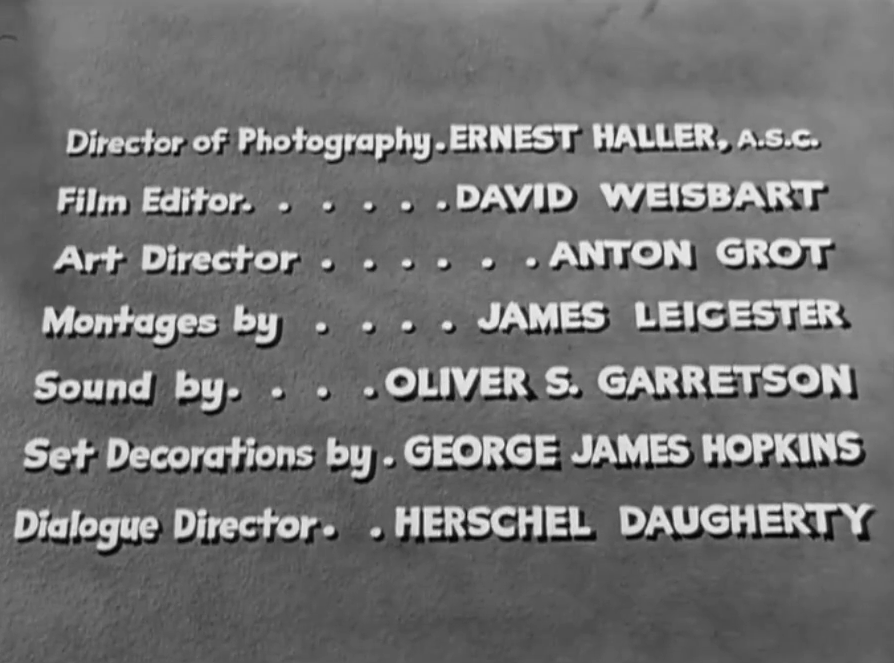| Description |
| On-screen: |
Cast list and wave effect |
| Description: |
The B part of the Mildred theme uses a different three-note motif (descending by step, then leaping up instead of down); horn gestures enter when Steiner's name appears on the screen |
| Music annotations: |
[m. 23] harps only (figured), no wave effect; [m. 25] arpeggios (harps only); [m. 26] arpeg; [m. 28] wave effect / gliss; [m. 30] gliss / pp; [m. 31] Hugo! Perhaps add a lower 8va a minor 3rd higher; [m. 34] wave effect; [m. 35] gliss; [m. 36] fix / harps only (no wave effect); [m. 37] stronger; [m. 38] wave effect / gliss; [m. 40] molto crescendo / gliss / gliss |
| Orchestration annotations: |
[m. 25] horn?; [m. 31] gong; [m. 34] 4 harps, pianos |
| Analysis: |
The B part begins by reinterpreting ab minor as g# minor and moving to E major; then there is a sequential modulation with the same material in G major; this second phrase resolves deceptively (to Db instead of G), which prepares a return of the A part |
|
| Tags |
9th chord | appoggiatura | cast list | chromatic mediant | deceptive resolution | enharmonic modulation | foreign key modulation | gentle | mickey-mousing | name on screen | opening title sequence | optimistic | romantic | sequential modulation | water | wave
|
Media |
